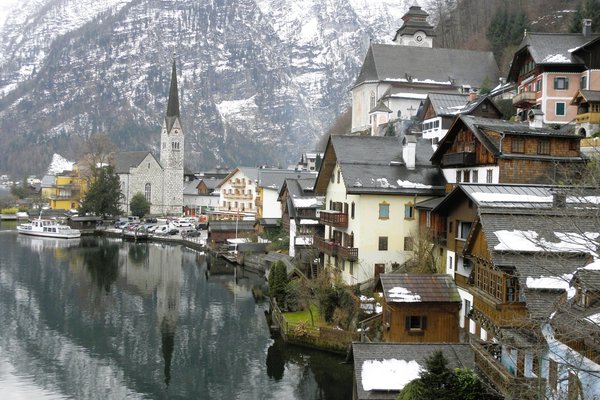Austria
Hallstatt-Dachstein
The Hallstatt-Dachstein Salzkammergut Cultural Landscape is a beautiful Alpine landscape where salt production brought great prosperity.
Its name is forever linked to European prehistory for the discovery of late Bronze Age and early Iron Age remains, which became the type site for the Halstatt culture. In addition to the salt mining town of Hallstatt, the landscape also includes the Halstätter Lake, the Dachstein massif, the town of Obertraun and the surrounding areas.
Community Perspective: one of the Alps' most stunning vistas, there possibly isn’t a place anywhere quite as picture-perfect as Hallstatt. It’s a bit of a mystery why it was nominated only as a cultural landscape because its natural properties are at least as important. Read Hubert’s review for tips on the natural side.
Site Info
Official Information
- Full Name
- Hallstatt-Dachstein Salzkammergut Cultural Landscape (ID: 806)
- Country
- Austria
- Status
-
Inscribed 1997
Site history
History of Hallstatt-Dachstein
- 1997: Inscribed
- Inscribed
- Type
- Cultural
- Criteria
- iii
- iv
Links
- UNESCO
- whc.unesco.org
- Official
-
- salzwelten.at — Salt Mine
- dachstein-salzkammergut.com — Dachstein mountains
- hallstatt.net — Halstatt.net
- Related
-
- kath.hallstatt.net — Hallstatt Ossuary
- museum-hallstatt.at — Hallstatt Museum
- ardmediathek.de — Film & text by Schätze der Welt
All Links
UNESCO.org
- whc.unesco.org — whc.unesco.org/
Official Website
- salzwelten.at — Salt Mine
- dachstein-salzkammergut.com — Dachstein mountains
- hallstatt.net — Halstatt.net
Related Resources
- kath.hallstatt.net — Hallstatt Ossuary
- museum-hallstatt.at — Hallstatt Museum
- ardmediathek.de — Film & text by Schätze der Welt
News Article
- Aug. 28, 2023 bbc.com — Hallstatt: Austrian town protests against mass tourism
- Dec. 1, 2019 dw.com — Austria's Hallstatt hit by major fire
- Aug. 11, 2019 washingtonpost.com — Nothing to see here: Popular European destinations want fewer tourists
- June 20, 2013 kansascity.com — Flash flood has inundated Hallstatt
- June 18, 2011 telegraph.co.uk — Austrian UNESCO World Heritage village outraged at plans for Chinese copy
Community Information
- Community Category
- Cultural Landscape: Continuing
Travel Information
Recent Connections
-
Perfect Inscriptions
1997 -
In Disney and Pixar Animation Classics
Frozen -
Bronze Age
Crit iv: "Salt production on a major sc…
Connections of Hallstatt-Dachstein
- Trivia
-
-
Role of Women
The transportation of the salt from the mines uphill to the town and port was carried out by the women. There is a bank at the slopes of the mountain where they used to rest on their way down. -
Built elsewhere as a full size replica
a Chinese firm has started to rebuild much of Hallstatt in faraway Guandong province -
Fatal Accidents or 'disasters'
13 people(10 students and 3 teacher from the Knabenmittelschule Heilbronn) died/freezed on 15 april 1954 -
Total Solar Eclipse since Inscription
11 August, 1999
-
- History
-
-
Iron Age
Halstatt culture was an (early) Iron Age culture -
Celtic history
Iron age Celtic culture -
Habsburgs (Austrian)
Rudolfsturm, HellerhausSee hallstatt.net
-
Bronze Age
Crit iv: "Salt production on a major scale can be traced back in Hallstatt to the Middle Bronze Age." (OUV) -
Time Capsules
Memory of Mankind: "Information is printed on ceramic tablets, then stored in the salt mine of Hallstatt."See en.wikipedia.org
-
Buried treasures
Displayed at the museum and found in graves uphillSee de.wikipedia.org
-
Archaeological 'Type Sites'
Hallstatt cultureSee en.wikipedia.org
-
- Ecology
-
-
Significant Karst Features
Dachstein massif of 574 km2 is an excellent example of glaciokarst (AB ev) -
Ice cave
Dachstein Ice Cave -
Dripstone
Koppenbr?ller-Cave
-
- Architecture
-
-
Vernacular architecture
-
Baroque
"late Baroque additions" (AB ev) -
Wooden architecture
boat houses
-
- World Heritage Process
-
-
Perfect Inscriptions
1997
-
- Religion and Belief
-
-
Protestantism
Protestant church
-
- Human Activity
-
-
Salt
-
Alpine ski areas in core zone
The main ski area is the "Schladminger Gletscher", which is labelled on the map with "Cross Country Skiing" and Alpine Skiing". It is best reached by gondola from the south side of the WHS. You cannot get there from Hallstatt without hiking. The boundaries of the core zone run along the mountain ridge. Also Dachstein Krippenstein (with lifts). -
Boats
PlätteSee de.wikipedia.org
-
Transhumance
"The beauty of the alpine landscape, with its higher pastures used for the summer grazing of sheep and cattle since prehistoric times as part of the process of transhumance, which still today gives the valley communities rights of access to specific grazing areas (...)" (Official description)
-
- Constructions
-
-
Ossuary
-
Railways
SalzkammergutbahnSee de.wikipedia.org
-
Tunnels
Hallstatttunnel, just behind the town of Hallstatt, on the L547 -
Via Ferrata
Dachstein -
Glass floored Skywalks
5 fingers Skywalk - 1 of its "fingers" has a glass floor -
Suspended cable cars
Dachstein-Welterbe-Seilbahnen / 1951 / 1718m, 4 mins / Aerial tramway in 3 partsSee de.wikipedia.org
-
Funiculars
A funicular connects Hallstatt with the salt mine above the town -
Plague Column
"Die Dreifaltigkeitssäule auf dem Hallstätter Marktplatz wurde im Jahr 1743 von dem Salzburger Bildhauer Joseph Anton Pfaffinger aus Untersberger Marmor geschaffen, und im Jahr 1744 aufgestellt."See www.idam.at
-
Cemeteries
Hallstatt's Parish Chuch + prehistoric cemetery / grave field next to the mine
-
- Timeline
-
-
Built in the 2nd Millennium BC
"systematic salt production was being carried out in the region as early as the Middle Bronze Age (later 2nd millennium BC)."
-
- WHS Hotspots
- Science and Technology
-
-
Mines which can be visited underground
Hallstatt Salt Mine: "Two long miners' slides take you deep underground to the mystic salt lake. A mine train returns you safely and comfortably back into the daylight."
-
- WHS Names
-
-
Named after a Mountain
Dachstein (2,995m)See de.wikipedia.org
-
Named after a Lake
Hallstätter See
-
- Literature & Film
-
-
In Disney and Pixar Animation Classics
Frozen -
Location for a classic movie
The Sound of Music (1965, Best picture at Academy Awards and preserved in the US National Film Registry)
-
News
- bbc.com 08/28/2023
- Hallstatt: Austrian town protests …
- dw.com 12/01/2019
- Austria's Hallstatt hit by major f…
- washingtonpost.com 08/11/2019
- Nothing to see here: Popular Europ…
Recent Visitors
Visitors of Hallstatt-Dachstein
- Adolfo
- Adrian Turtschi
- Afshin Iranpour
- aj
- Alberto Rodriguez Gutierrez
- Alexander Barabanov
- Alexander Lehmann
- Alex Baranda
- Aljaz
- A. Mehmet Haksever
- Ana Lozano
- Antonio J.
- Argo
- arnaugir
- Artsybrea
- Aspasia
- Assif
- a.thum
- Atila Ege
- AYB
- BaziFettehenne
- bergecn
- Bill Maurmann
- Bin
- Bodil Ankerly
- Boj
- bossc
- Brendan Carroll
- Bropyk
- butterflybird
- Can SARICA
- Carlos Sotelo
- Caspar
- Cezar Grozavu
- cflw
- chenqtao
- Cheryl
- CherylKla
- Chole Ross
- ChrisN
- Christer Sundberg
- Christian Wagner
- christof
- Claire Bradshaw
- ClaraHH
- Cluckily
- Clyde
- Cobaltrage
- Colossus
- Corinne Vail
- Cristina Erba
- Csaba Nováczky
- ctravel
- CugelVance
- cwthong
- Dagmara
- Daniela Hohmann
- Daniel Chazad
- Danny L
- Dan Pettigrew
- David Aaronson
- David Berlanda
- David Marton
- del
- Dimitar Krastev
- Dimitrios Polychronopoulos
- Dirk-pieter
- Dorejd
- Elia Vettorato
- Elisabeth Fransisca Situmorang
- Els Slots
- Emilia
- erdsaumnaht
- Erfe91
- Errol Neo
- Eva Kisgyorgy
- Evgenii
- fabi-ddorf
- Fan Yibo
- Fede1203
- Femke Roos
- Frederik Dawson
- FS
- Gabor
- Garrett
- George Gdanski
- GeorgeIng61
- GerhardM
- Gernot
- halryder
- HaraldOest
- Harald T.
- Harry Mitsidis
- H Beswick
- heywhatever2
- Hubert
- Hurrvinek
- Iain Jackson
- Ian Cade
- Ivan Rucek
- ivantham
- Jakob F.
- James Bowyer
- Jana and Matt
- janameerman
- Janina Lehmann
- janis
- Jan-Willem
- Jarek Pokrzywnicki
- Jasam
- Jeffrey Chai
- Jens
- Jesse S 2010
- Jezza
- J_neveryes
- JobStopar
- Joel on the Road
- Johan
- John Smaranda
- Jonas Hagung
- Jonas Kremer
- Jonas Martinsson
- jonathanfr
- Jon Bauer
- Jon Eshuijs
- Joyce van Soest
- k2flake
- KarenBMoore
- Karito Vies
- Kasia M.
- Kedp2023
- KeithBailey
- Kerékgyártó
- Kjlauer
- Klaus Freisinger
- Knut
- krtek
- Kurt Lauer
- kutasp
- LaVale
- Liamps91
- lichia
- ljowers
- Luboang
- Lucio
- Ludvan
- Luis Filipe Gaspar
- Maciej Gil
- Małgosia Łupicka
- marcel staron
- Martin
- Martina Rúčková
- Marton Kemeny
- Marty
- Mateusz
- Matthewsharris
- MAURO PODDA PANI
- Max
- MaYumin
- Michaela0705
- Mikko
- Milan Jirasek
- Mohboh
- MoPython
- Mozzer76
- Mstrebl1990
- Naim Y
- nan
- Nasebaer
- Nicole Lampos
- Nihal Ege
- opperpco3
- _oscar
- PabloNorte
- Pat Martin
- Patrik
- Patrik_globe
- Paul Schofield
- PeterH
- Peter Lööv
- Petteri
- Philipp Leu
- Philipp Peterer
- Pincze
- Porcho
- Purrfect
- Rafał Kałczuga
- Randi Thomsen
- Reiseblitz
- Reisedachs
- Remigiusz
- Reza
- Riccardo Quaranta
- Rick Ohm
- RobRos
- Roger Ourset
- Roman Bruehwiler
- Roman Raab
- Rudegirl
- Sabrina Liebehentschel
- Schnitzel
- Sclowitz
- Sergio Arjona
- Shandos Cleaver
- sime147
- SirLoydd
- Solivagant
- Stan
- Stanislaw Warwas
- Stefan A. Michelfeit
- stephhollett
- Stijn
- streliorsi
- Szucs Tamas
- takanenohana
- Tamara Ratz
- Tcchang0825
- tedchang
- Tetena
- Tevity
- Thanneermalai L
- Thomas Buechler
- Thomas Harold Watson
- Thomas van der Walt
- Thorben
- Tim Allen
- Timonator
- Tom Flaten
- triath
- Tsunami
- Twobaconsandaboston
- Vanessa Buechler
- Van Hung
- VB73
- Veronica
- Viaje al Patrimonio
- VLabhard
- voyager
- WalGra
- Waxwing
- Westwards
- Wojciech Fedoruk
- YaroMir
- Yevhen Ivanovych
- Zhenjun Liu
- Zizmondka
- Zoë Sheng
- Zsuzsanna Forray
Community Reviews
Show full reviews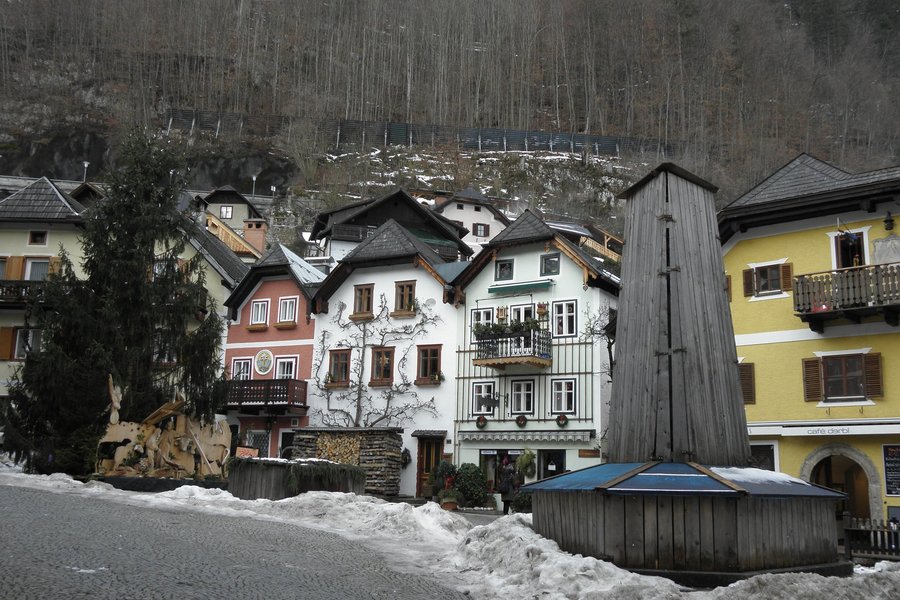
Hallstatt is a beautiful little town, and attracts lots and lots of tourists. We drove in from Salzburg through vary mountainous roads and some mistakes of the GPS. Once in town, you have to contend with parking, as there is no outside cars allowed in the tourist areas. The two small lots in the center fills up quickly, but once in, everything is within walking distance. The parking payment system is strange (for non-German speakers) but once you figure it out that the little yellow token is your parking stub, everything is logical.
We did the tourist thing by taking the funicular up the mountain for the view, waiting patiently for the young couples taking pictures. Our physical condition did not allow us to explore the salt mines. A visit to the Museum (no one is there) was actually quite educational in terms of understanding the cultural aspects of the Hallstatt Culture and history of salt mining.
Keep reading 0 comments
On a small Europe trip with the family of my girlfriend we have visitet the small village of Hallstatt in the big Hallstatt- Dachstein WHS region. Even though we were around with a big Mercedes Sprinter we were able ti drive across the village along the beautiful lake to a big parking space.
It seemed as if due to Corona restrictions the town was much emtier and therefore more appreciateble than before the pandemic. At least it was not too full to walk on the touristic harbour walking way. The lake, the mountains and the houses in the village form a beautiful combination. We walked up to the ecumenical graveyard (The protestants can not bury their bodies next to their church as it's on lake surface level therefore swampy) and visited the bonehouse for a small entrance fee in which some people from Hallstatt found there final place after dying. The skulls and bones are up to 300 years old and partly dyed with colours and symbols.
Hallstatt is really a beautiful spot and it's beauty also lies in the calm atmosphere in beautiful nature. I could imagine in post Covid 19 times with all the intercontinental tourists it can loose parts of its beauty while visiting, however it is worth a visit.
Keep reading 0 comments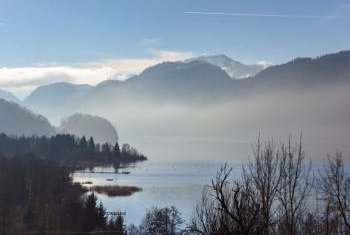
On an organized trip to Salzburg, the tour had a surprise stop at this UNESCO site while the bus driver took a break. It was completely gorgeous-we saw a cold December mountain lake. I didn't get to spend too much time (only 30 minutes) but what I saw was really wonderful.
Keep reading 0 comments
Visted Hallstadt on our trip September 2014.
The cultural landscape is interesting and we even had a swim in the Hallstatter See (brrr).
However visting the WHS is pretty hard. The prices are horrendous, and no parking is available for Campers. But the old town at the lake is quite intersting.
Keep reading 0 comments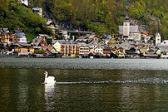
I visited this WHS in April 2014. It is quite hard to understand why such a site is not inscribed as a mixed site at least when it has such a natural setting. The wooden houses are really picturesque and there is an interesting World Heritage loop trail which gives you an interesting overview of the city. The WH Museum is an interesting place to visit to better understand the OUV of this site. The highlight of my trip were the painted skulls in the Beinhaus. They are really unique and just outside there is a tiny graveyard with a wonderful view of the mountains and lake. I was one of the only European tourists around. The vast majority were Asian tourists - I think it must be among the Top 10 places Asian tourists visit in Europe for some odd reason - no wonder the Chinese built a replica!
Keep reading 0 comments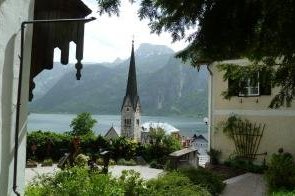
I’m not sure I have been anywhere quite as picture perfect as Hallstatt. You would really need a hard heart not to swoon at the incredible mixture of the town, lake and Alpine peaks, especially if you arrive by train and have to bob across the water from the station to the town centre.
Hallstatt is certainly small, but a little larger than I had expected, which was good in absorbing the large number of people visiting. I rather enjoyed ducking off down little side streets and climbing up flights of steps to find new viewpoints. One of the highlights of these explorations was the Beinhaus, which was home to the decorated exhumed skulls of the town’s former inhabitants.
Like the others here I enjoyed the museum in the centre which does a great job of explaining why this whole area is a world heritage site. It is especially good at highlighting the importance of the area during the Hallstatt era (3,000 thousand years ago). Its displays showed that this place wasn’t on the World Heritage List just because it looks quite pretty, but rather that at one stage it was the centre of a large cultural sphere. In saying that the interesting exhibits on the areas mining heritage couldn’t convince me to stump up the high fees to visit the Salt Mines above town.
The cost of a visit is one thing to keep in mind if you are visiting, my day trip from Salzburg ended up being one …
Keep reading 0 comments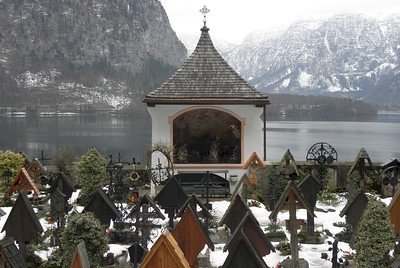
The best WHS require some effort to get to. That's also the case with Halstatt, at least when you're using public transport. I went out there on a day trip from Salzburg. The journey required a bus ride (1.5 hours, bus 150 to Bad Ischl), some waiting at the train station, a 40-minute train ride and finally the 3-minute ferry across the Halstatt lake to the town proper. The scenery is interesting enough all the way. Although I visited in winter, there was not much snow on the ground. The closer you get to Halstatt, the Alpine peaks get more impressive and they were snow-white of course.
Halstatt is a popular tourist destination, especially among Asians. A bunch of them (young Chinese) shared the same bus with me. We all anticipated the first view of the town across the lake, as we had already seen so many pictures of that. I discovered that the iconic pictures mostly are taken from the side of Halstatt itself, not from the other side of the lake. There are some uglier buildings on the lakefront that are never shown. Also, there are cars and a parking lot, somehow I always had thought that the town was inaccessible by car (it's just blocked on one side).
Nevertheless these minor misgivings, I enjoyed strolling around. I took lots of photos, it's so extremely picturesque. I also visited the World Heritage Museum, which in effect is a local museum that tells the story of Halstatt …
Keep reading 0 comments
I agree with the other reviewers this should have been a mixed nomination. Nonetheless, Hallstatt as a cultural site has a lot to offer too. The current town has some beautiful architecture, but I think its archaeology (the Hallstatt Culture) is what renders it so important. This can be well experienced in the new World Heritage Museum which offers very detailed information about the history of the this place. It also managed to receive back all exhibits from the famous graves uphill that used to be on display at the Vienna Natural Science Museum and are now on display here. You can also visit the graves themselves near the entry to the salt mines. A worthy WHS to visit.
Keep reading 0 comments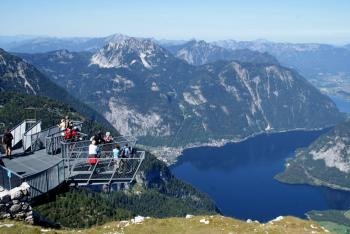
The scenic landscape of Hallstatt, the lake and the surrounding mountains is really marvellous. The architecture of the town with its boathouses can be viewed best from the lake, either with a boat trip or from the ferry to the train station on the opposite shore of the lake. The ascent to the Rudolf tower is also rewarding: You have a wonderful view over Hallstatt, the lake and to the Dachstein massif. You can walk or ride up with a funicular. Not far from the Rudolf tower is the entrance to the salt mine, the oldest salt mine in the world. The highlights here (not only for children!) are the miners' slides, one is 64 meters long. And of course, do not miss the Beinhaus (ossuary) next to the parish church Maria am Berg.
The beauty of the town and its spectacular location at the lakeside was extensively described by the previous reviews. But the WHS also includes the Dachstein massif and the large cave system. Three caves can be visited, each is of a different type: the Ice Cave with fascinating ice formations, the Mammut Cave with rock formations in different colours and the Koppenbrüller Cave in the valley, a stalactite cave. Especially the Ice Cave is worth a visit, the tour lasts 50 minutes.
If you stay a few days in Hallstatt, you should make a trip to the Dachstein massif. A cable car runs in three sections to the Dachstein mountain plateau. At the upper station of …
Keep reading 0 comments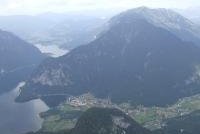
I agree that this should have been a combined natural and cultural site.
I stayed at Obertraun and took a ferry from there to Hallstatt Markt, returning again later by bus from Hallstatt Lahn.
The bus also took me up to the Obertraun cable car station from where I was conveyed in two cars to the summit of Krippenstein, a part of the Dachstein Massif. I hiked from there to the 5 fingers, a lookout that is cantilevered over the edge of a 400 metre cliff. The views over the Hallstattersee and the Dachstein massif were extensive.
Descending by the upper cable car I then visited the Ice Cave, a much larger series of ice filled undergound galleries than I had expected. The formations into which the ice had contorted itself was fascinating.
Keep reading 0 comments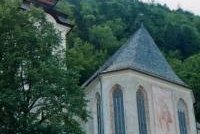
I have been once in Halstatt, a beautiful town situated on an artificial promontory (Mülbach), resulting from the dumping of mining debris, and on the strip between the mount Salzberg and the lake; the southern part (18th century) is also called In der Lahn and it’s at the mouth of the valley of Echterntal. In Halstatt are nice tall and narrow Gothic houses (also boat-houses on the lake) that have stone lower storeys with barrel vaults and upper wooden storeys (only a few has saddleback flat roofs with wooden planks or shingles), like on the triangular market square, where is also the column of the Trinity. The main church of St. Mary is constructed on a hill in Gothic style (only the roof and the spire are Baroque; some elements are Romanesque) and has nice windows, a portal, two naves, one apse, sculptures, frescos, vaults and altarpieces also by Lienhart Astl. Near that is the Chapel of St. Michael and the Carmel House, where are the skulls and the bones (marked with names) that couldn’t have space in the cemetery. In Halstatt are also the Baroque Mount of Olives Chapel, the Calvary Chapel, the neo-Gothic protestant church, the Baroque almshouses with a chapel and the Tower of Rudolph that protected the salt workings.
I was a little bit disappointed by this town because it hasn't important monuments, but its architecture is however of high quality. It is worth to be visited if you are near Salzburg (if you go there …
Keep reading 0 comments
It may be hard to pronounce, but this storybook setting seemed like a dreamscape when I visited in 1999. This is what Austria is all about, and this scenic region is a great palce to stop and smell the strudels, so to speak.
Keep reading 0 comments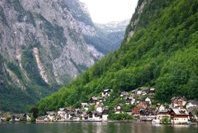
Arriving Hallstatt in Salzkammergut by train is a small adventure in itself. It must be one of the few, if not the only town in the world, which has its train station across a lake. So following a 10-minute ferry ride, whilst gazing at the breath-taking mountain landscape, I arrived to the small town that desperately clings onto the mountain side on a stretch sometimes not wider than 50 meters. Whether it will all slide down into the lake was a question I asked myself more than once…
My stay in Hallstatt lasted for four days so I had plenty of time to explore both the ancient salt mines that has given its name to the landscape, the deep mountain ice caves in the nearby village of Dachstein but also just wonder around in this peaceful alpine landscape. Day-touring tourist might fill Hallstatt during the day but in the late afternoon it all calms down and you can enjoy a rich Austrian dinner together with a cold beer whilst dreaming yourself away to a different time and age.
An odd experience is the small “Beinhaus” (bone house) that in its own way illustrates the problem of availability of land and space in Hallstatt. Since the cemetery was so small and without possibility to expand and cremations was forbidden, there was no alternative than to open the graves after 10-15 years and move the bones to the Beinhouse. It’s a tradition that dates back over twelve centuries and today there are …
Keep reading 0 comments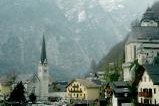
Hallstatt, a small paradise on earth in central Austria is breathtaking with its absolute beauty of natural environment. This place is not a newly jet set luxury resort town, but a human settlement since ancient time because of the richness of salt in this area. Salzkemmergut is the name of this region, a beautiful alpine land with many picturesque lakes and the priceless treasure of old time, salt. I am quite sure that Salzkemmergut has strong relationship with Salzburg, as Salzburg was prospered by salt trade, thus its name and Salzburg is really near to this area.
Hallstatt town is the centre of the region with many pretty houses and churches. Unfortunately that I visited Hallstatt before Easter, so the famous salt mine and Dachstein ice cave were closed as well as many tourist facilities, but these made Hallstatt where normally draw thousands of tourists everyday in high season to be more normal town liked not a tourist hot spot. My friends and I walked around this town less than one hour as the town is so small. The main attraction is the town parish church and its cemetery. The cemetery is really small, so the church has to do something with the lack of space problem, as a result, this church has policy to dig the bones up and put them in the small house where tourists come to admire a pile of skeletons and skulls!
I really recommend everyone to take a walk along the lake shore especially …
Keep reading 0 comments
As the name implies, the region of Salzkammergut, stretching across three Austrian provinces (Upper Austria, Styria, Salzburg) became important through the production of salt. Today, this industry still exists, even though on a much smaller scale. The little town of Hallstatt still has reminders of its former wealth that came with the salt. Now it relies mostly on tourism, since it is located on a beautiful lake with one of the Alps' most stunning vistas. It is also important for its many prehistoric findings - a whole neolithic culture was named after the place. The Dachstein is one of Austria's more famous mountains, located in an almost untouched region of high mountains, deep valleys, and evergreen forests. Except for Hallstatt and a few other places, few visitors come here, which is both a blessing and a pity, since it is one of Europe's most beautiful areas. I don't know exactly why it was nominated only as a cultural landscape, because its natural properties are at least as important.
Keep reading 0 comments
When we arrived in Hallstatt, we knew we had found one of the more beautiful places in the world. Pictures of Hallstatt, a picturesque, beautiful lake-side village, are often used for a calendar, a jig-saw puzzle, or a greeting card.
People have lived here for 3,000 years, and it's easy to see why. There were 6 or 8 waterfalls and streams coming down the mountain, through the town. They had built garages on stilts, out over the water, to keep the boats protected from the weather.
Next to one church, a couple flights of stairs lead to the town cemetery. Each grave is a separate, detailed, trimmed, precision flower garden. The "gravestones" are crosses covered by a little roof, and many display a photograph of the person buried there.
Keep reading 0 comments
